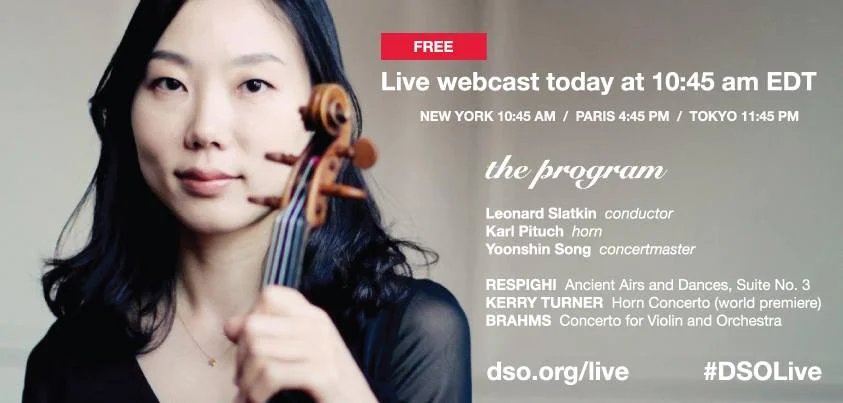This is the first of a series on orchestras streaming their performances. This installment centers around the audience. Orchestras have done a lot of research on who their audience is, and there is a lot of data on who streams music. This article talks through both sets of observations and find the overlap between the two.
Telling Stories with Data: 4 Steps to Making Data Visualizations More Readable
Data visualization helps art institutions communicate with internal and external communities more effectively and efficiently. There are a numbers of quality data visualization tools available for free, but how arts managers use these tools defines how effective the data visualization. The following four strategies provide a guideline for arts managers to create data visualization with purpose and impact.
Take Arts Programs to the Next Level with Open Data
How Can Google Analytics Help Your Arts Organization Increase Your Audience?
Many arts organizations are constantly struggling to both bring in new patrons as well as maintain engagement among their existing base. Unfortunately, research shows that this hurdle is not going to disappear anytime soon due to a number of factors, as arts attendance has been on a steady decline in recent decades. Fortunately, Google Analytics gives arts managers the power to answer questions about their current audience demographics based on website traffic in order to both understand demographic trends and how best to target new audiences.
From Strategy to Analysis: A Guide to Navigating Google Analytics
Whether working in digital or traditional channels, quantifying impact and engagement is a challenge. Often, it is difficult to find the causal link between marketing efforts and programmatic success. It can also be confusing to figure out how to effectively use Google Analytics, which, when mastered, can be used as a tool to identify successful communication strategies and observe user behavior.
Our latest publication, From Strategy to Analysis: A Guide to Navigating Google Analytics, gives arts managers a potential solution. Drawing parallels to the scientific method, this paper gives a complete step-by-step process using a theoretical case study organization to illustrate how an arts manager can use Google Analytics to achieve their organizational goals.
The Art of Data Management
This post, originally published on Analysis from TRG Arts, is the second in a series of blog posts sharing success stories and best practices to highlight the benefits of effective data management. Find the first post here.
Data isn’t about numbers. It’s about people. When analyzed, data tells stories about people and their actions. Right now, in your database, a story exists about the decisions that people in your organization make. And, a story exists for every patron, which chronicles their relationship with your organization.
Research Update #3: Creating Online Audiences For Orchestras
In my last research update, I illustrated some of the most important opportunities and benefits associated with the creation of online audiences. But as arts managers consider how to create these online audiences, they should also be aware of a variety of challenges and potential risks associated with doing so. Here are a few:
Attracting New Crowds
An ongoing concern of performing arts managers is the impact of arts participation and engagement programs on creating new audiences. Specifically, arts organizations are concerned as to whether or not their efforts elicit new patrons to attend performances regularly. Concerns exist in particular about the overall impact of engagement programs like simulcasts, wondering if a new audience members are attending these events at all, or if the events are drawing the same group of people that come to staged performances. Furthermore, a growing discomfort exists that opera simulcasts might actually be “cannibalizing sales,” or in other words, reducing ticket sales at live opera performances.
Research Update #2: Creating Online Audiences for Orchestras
Last month, I introduced the Berlin Philharmonics’ Digital Concert Hall as a best-practice example of creating online audiences by a symphony orchestra. Indeed, we can find orchestras worldwide reaching out for audiences beyond the walls of a traditional concert hall. So let us inspect three of these orchestras—the Detroit Symphony Orchestra, the Sydney Symphony Orchestra, and the Philharmonia Orchestra (UK)—and have a closer look at some of the tools they use, how these tools are being implemented, and the resulting opportunities they create.
Research Update: From Simulcast Audience To Live Audience
San Francisco Opera's (SFO) general director David Gockley came to the company in 2006, bringing with him the legacy of free "plazacasts" that he had done at the Houston Grand Opera, his former home. During his first year at the San Francisco Opera, 8,000 people turned up at Civic Center Plaza near the Opera’s home at War Memorial Opera House to watch a simulcast of Puccini's Madama Butterfly. However, Gockley was concerned that there was no method of tracking the conversion of simulcast attendees to ticket buyers, so at the suggestion of a staff member, the simulcasts were moved to the AT&T ballpark.















